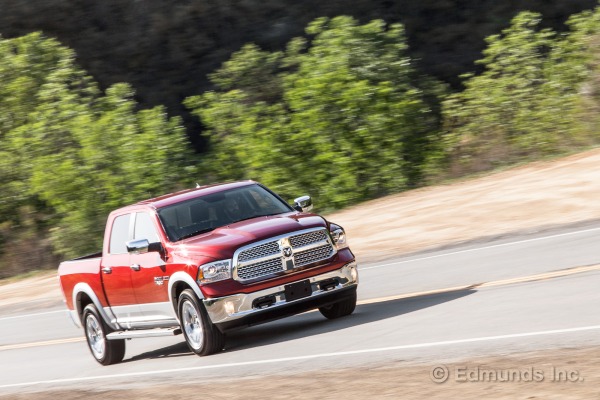
When you're shopping for a pickup truck, you might notice different axle ratios offered as options and wonder which one to choose. You might also wonder if it really makes a difference. For many truck buyers, the standard axle ratio will probably work fine. But if you plan to pull a trailer or haul heavy loads, it's a good idea to understand what the axle ratio is and how it affects your truck's performance and fuel economy.
Automakers build trucks with a range of optional axle ratios. The term refers to the gears in the truck's differential, which is a mechanical device that links the rear axle to the driveshaft and then the engine. Four-wheel-drive trucks will have a matching ratio in the front axle's differential. Unless the truck's window sticker lists an optional axle ratio, it will come with a standard axle ratio that's selected by the manufacturer.
The key to understanding gear ratios is to remember that as the numerical ratio goes up, towing capacity increases, but fuel economy goes down. Therefore, a truck with optional 3.73 gears, for example, will tow a heavier trailer than one with 3.55 or 3.21. But it will also use more fuel in all situations because the engine will rev higher.
The standard axle ratio for Chevrolet pickup trucks is "chosen to balance performance, capability and fuel economy," says Tom Wilkinson, communications manager for Chevrolet. However, he adds that the standard ratio is biased more toward fuel economy, while optional ratios tend to provide more towing capability.
"If you are constantly towing, I recommend the highest ratio possible," says Chase Bellows, an Edmunds.com live help specialist who is a pickup enthusiast and former truck salesman. The choice of a higher axle ratio will only knock off about 1 mile per gallon from the truck's fuel economy, Bellows adds. However, keep in mind that pickup truck fuel efficiency is low to begin with, so even a 1 mpg reduction is significant.
The "drive cycle," which is how, how fast and where you drive, is also an important consideration when selecting the right axle ratio, says Nick Cappa, a spokesman for Ram trucks. For slower speeds and rural driving, a higher gearset will add capability and a more spirited driving experience "without too much damage to the final mpg number," he says. But if there is a lot of high-speed driving, the buyer may want to consider the numerically lower gearset, Cappa says.
One tricky thing about choosing an axle ratio is that the EPA-provided fuel economy information on the window sticker primarily applies to the "base" or standard axle ratio, even though that particular truck might come with an optional axle ratio, says Dan Edmunds, Edmunds.com's director of vehicle testing. Therefore, any axle ratio you see listed on the "options" side of the window sticker will lower the fuel economy figures printed on the very same sticker.
Another difficulty is that optional axle ratios (and their effects on towing) cannot be compared across truck manufacturers, Edmunds says. That's because each truckmaker may use a different tire size, and the tire itself acts as the final "gear" in the system. "Furthermore, it's hard to compare tow ratings in general across manufacturers because the Society of Automotive Engineers' standard rating system has not yet been adopted by all carmakers." Edmunds says it's best to compare the axle options within a single brand to see how each one affects the tow ratings listed in that brand's towing guide.
As you shop for your truck, you might hear axle ratios with lower numbers referred to as being "tall" gears and those with higher numbers as "short" gears. To more easily remember what this means, think of a tall person who travels a greater distance with each step. Similarly, a tall gear moves the truck farther with each turn of the engine. This delivers better gas mileage because the engine revs lower at a given road speed. However, it also reduces the torque — or power — so you can't tow heavier trailers or haul heavier loads.
Cappa recommends that truck shoppers look at the towing and payload tables on Ram's Web site. They're there to help customers select the right powertrain for their specific needs. And he also points out that as truck manufacturers produce transmissions using more gears, the axle ratios will also change. For example, a transmission with more gears may allow a truckmaker to offer a taller rear axle ratio (a 3.55 instead of 3.73) and still offer the improved towing and hauling capabilities.
Before you leave for the dealership, take a moment to think about how you are going to use the truck, says Bellows. When in doubt, default to a higher numerical gearset. While it will lower your fuel economy slightly, it will also mean you will be more comfortable while hauling and towing over long distances.